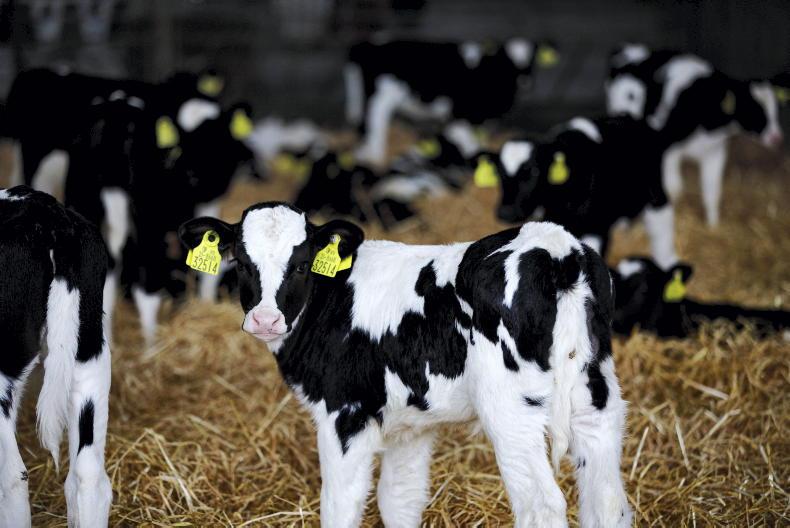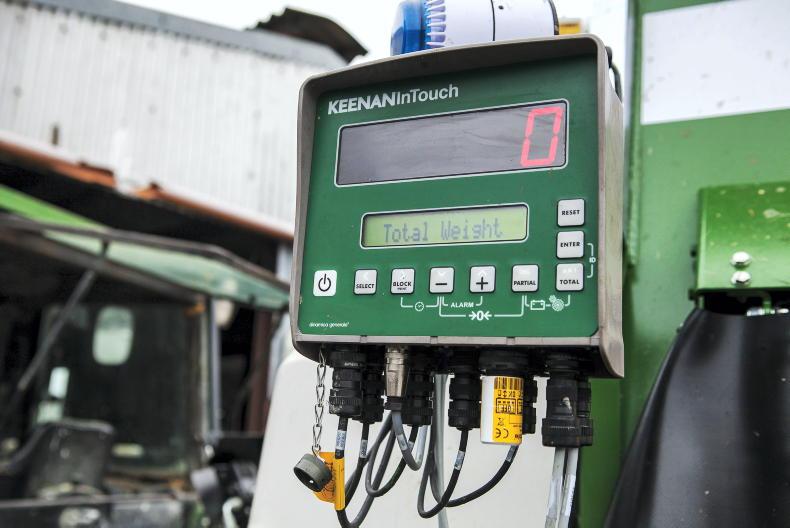Even if you have reared, served, and calved hundreds of heifers, you are probably not as good at judging liveweights as you think. That has certainly been my experience when working with Dairylink Ireland farmers over the past four years.
Before a heifer steps on to the scales, it can be interesting to get a few predictions of her weight from whoever is present and then see how far away the guesses are from the actual reading. In a recent conversation with local dairy advisers, the consensus was that farmers who regularly weigh heifers have a lower average age of first calving. That’s the secret – weigh them and manage accordingly.
The target on Dairylink Ireland farms is to have heifers calving at 24 months of age at a liveweight of around 600kg.
Heifers should be served at around 60% of the mature body weight
Most programme participants operate block-calving systems, so the 24-month target is an average for the group. Heifers that were born from later-calving cows will really need to be calving before 24 months of age to fit in with the main block.
Heifers should be served at around 60% of the mature body weight, so around 360kg by 15 months of age for a 600kg cow.
Hitting this target equates to an average liveweight gain (LWG) of 0.75-0.80kg/day and this is the key benchmark that Dairylink farms try to follow throughout the rearing process.
Table 1 provides a summary of results from the most recent heifer weighing on programme farms. Heifers are on or above target on most farms.
Spring-born calves on Frank Goodman’s farm came out of the calf shed slightly behind but he has moved to address this by upping concentrate supplementation at grass until the group get back on track.
Growth rates on Richard Marshall’s group are running well ahead of target, even though turnout was delayed until May due to a scarcity of grass. He is able to cut out meal feeding completely and heifers should still be able to cruise through the summer without supplementation.
Knowing that meal can be cut out without affecting liveweights at breeding represents a financial saving. If heifers were getting 3kg/head/day, cutting this out across a group of 30 heifers will equate to a saving of around £25 per day.
Likewise, if some heifers are below par, getting them separated out and on to extra feeding will allow them to catch up. This avoids risks with delayed first service or low liveweight at calving.
It should be noted that average values hide outliers, so weights should be analysed on an individual basis and not as a group. A few poor performers will almost certainly remain behind the rest of the group throughout the rearing process unless they get special treatment.
Participants on the Dairylink Ireland programme have electronic weigh scales and they are encouraged to run heifers through the crush to capture weights every few months.
This is usually done when heifers are already passing through the yard or they are due to run the crush for a dose anyway, so it does not represent a lot of extra work. A few second weigh each heifer and weights are usually jotted down on the back of an envelope. Figures for individual animals are later compared to the previous weighing and informed management decisions are then made.
For farmers without weigh scales, the price of equipment ranges significantly. There have been cases of farmers buying industrial beam scales for under £400 and then fitting a homemade base to allow cattle to stand over the beams.
Other setups generally cost over £1,000, with weigh scale indicators around £500 and aluminium platforms sitting around £600.
It is a cost, but if the equipment is well maintained it should last a long time.
Another way of looking at it is the price of weighing equipment would not buy too many cubicle bedders or robotic scrapers
More importantly, it will allow significant financial savings due to lower replacement costs through earlier calving and more targeted use of concentrates.
The question could also be asked – how often have you spent £1,000 on something that led to no return on investment?
Another way of looking at it is the price of weighing equipment would not buy too many cubicle bedders or robotic scrapers.
The cheap and cheerful option is a weigh band. This is a tape which gives an estimate of calf weight based on chest width. It is placed around the chest behind the front legs and shoulder blade.
It is mainly used on young calves as it can prove less time consuming than pushing calves out of pens and on to weighing scales in the calf shed.
Most bands go up to 400kg so it could technically be used on maiden heifers, although safety needs to be an essential consideration if throwing the band below heifers in a crush.
Costs
Cost of weighing equipment may appear high but analysis of rearing costs on CAFRE benchmarked farms were as follows, which shows the savings possible if good weight for age is achieved:
Rearing cost (£/animal)
Top 25%: 1,495
Average: 1,907
Bottom 25%: 2,637









SHARING OPTIONS